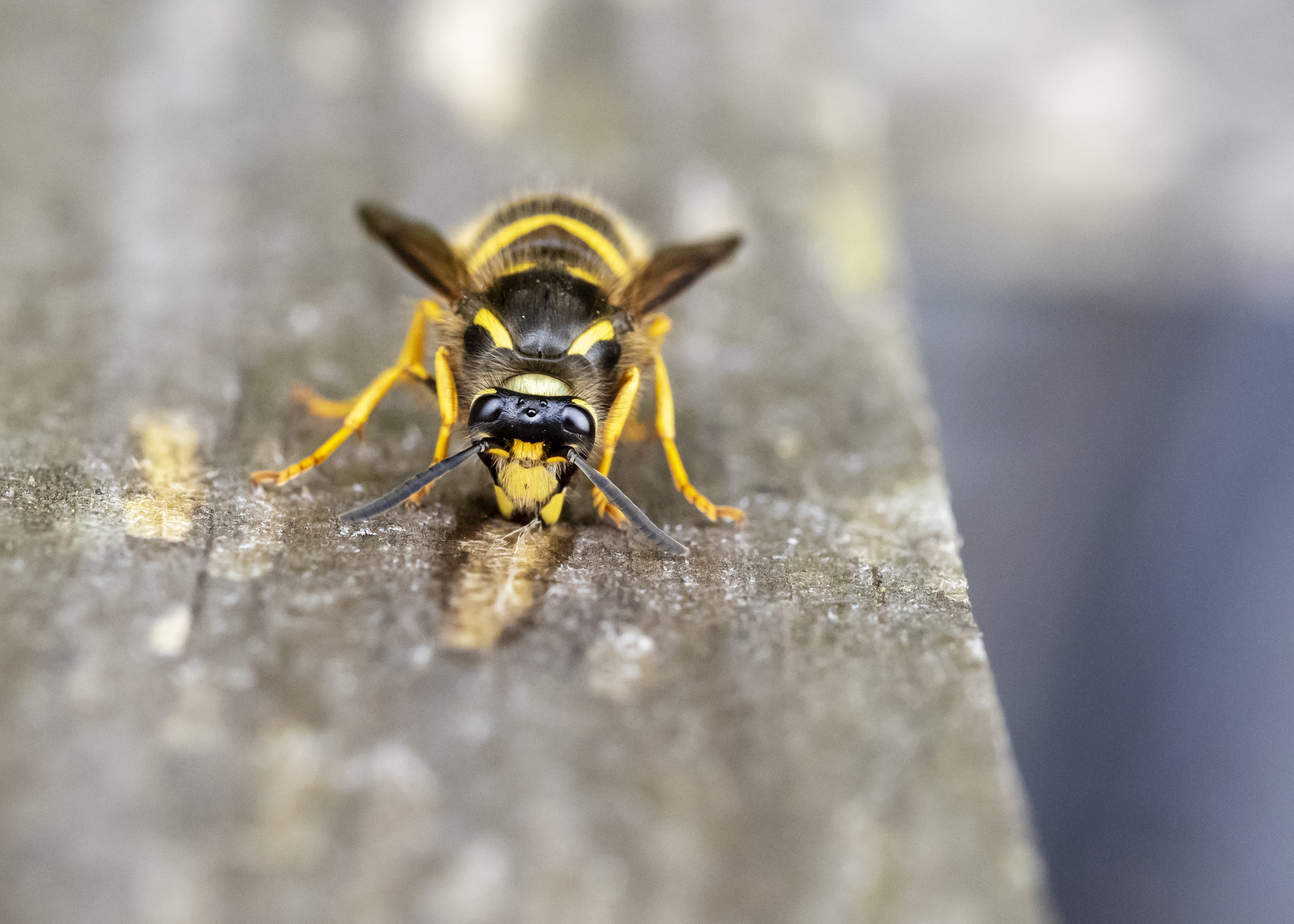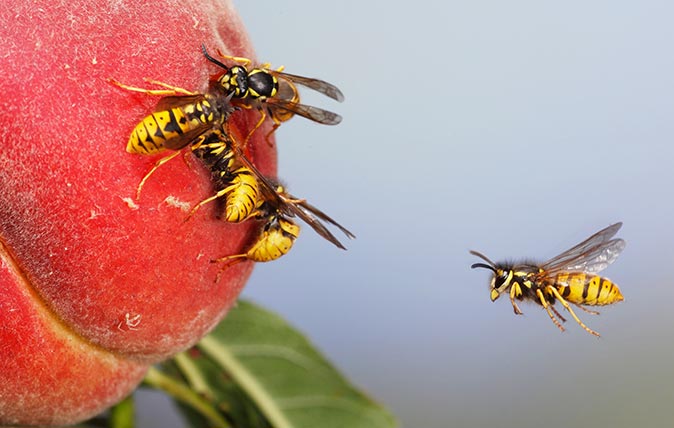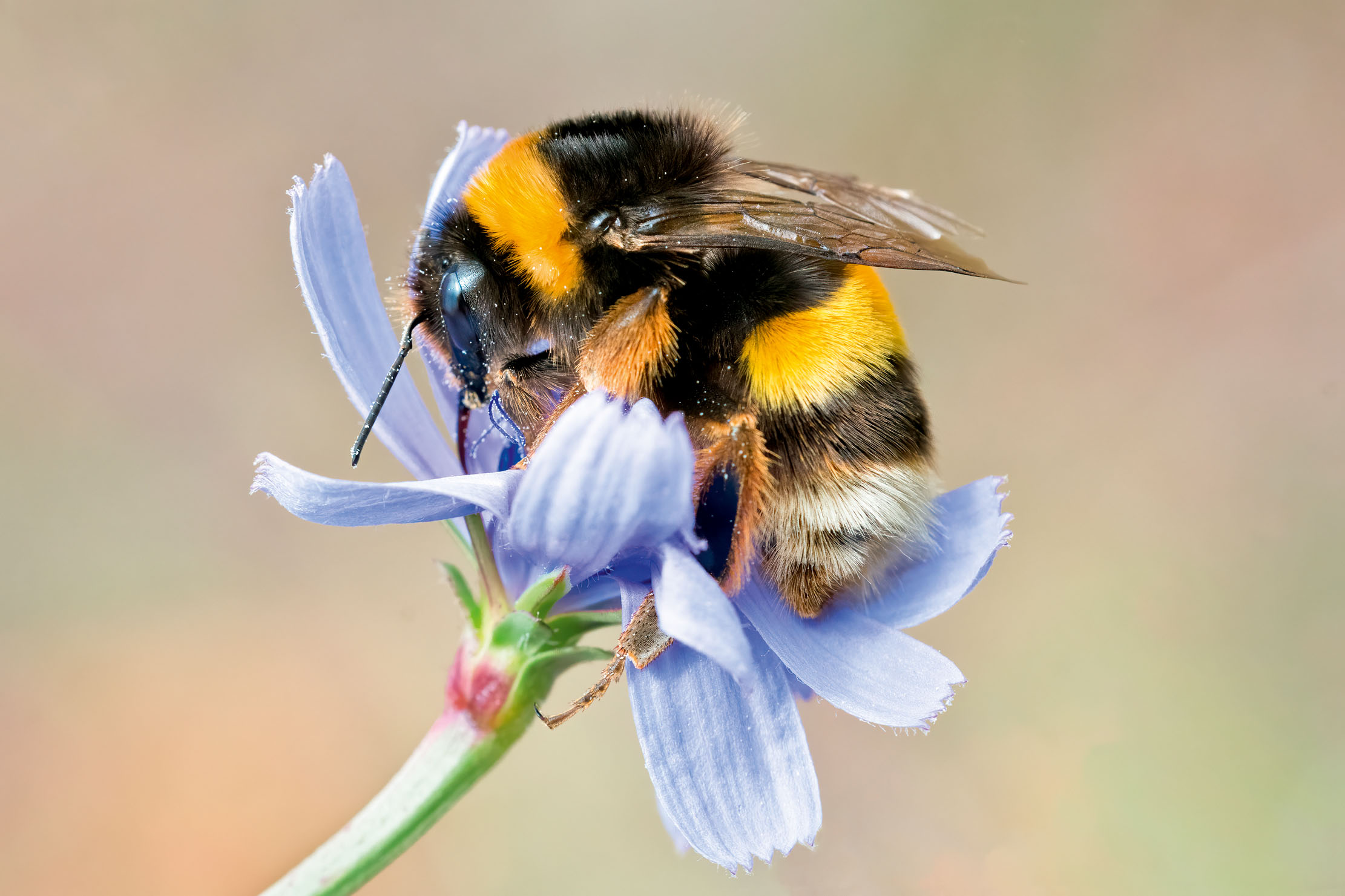
The wind has started howling, the mercury has plunged and — as if to really nail home the point — the date on the calendar now reads 'October', putting us squarely in the grip of Autumn. The cold snap a few weeks ago was still early enough in the year that it could be followed by a delightful respite of sun and warmth; but for the residents of Britain, it really is game over now until the Spring — at least in terms of warm sunshine.
If you think we have it bad, however, spare a thought for the wasps. Yes, really. Just a week or two ago they were enjoying their annual last hurrah: with the ripening of fruits on trees, brambles and vines, plenty of vespa vulgaris were at large, seeking out the juicy sweetness. Pears, grapes and plums are favourites, with thin enough skins to be broken into easily; apples are tougher of flesh and harder to access, but these winged garden citizens feast on them via holes already made from bird peckings.
Despite people’s widespread loathing and fear of wasps, they are chiefly a benign presence in the garden, eating thousands of harmful insects and their larvae. Indeed, a few years ago David Profumo wrote a piece for Country Life about why you should be delighted to have wasps in your garden, sharing the facts that this 'carnivorous top predator... consumes numerous aphids, caterpillars and other grubs: it’s been estimated that they account for 7lb of such prey annually per acre and they also play a significant part as pollinators.' Admittedly, not much consolation to little Jane or John when they end up getting stung (and a wasp sting rates a solid two out of four on the Schmidt sting pain index).

There is another reason to celebrate wasps, though: their nests, which are always magnificent feats of papery invertebrate architecture. Although the quarters of some species are hidden in the ground or crevices in buildings, those of median wasps are suspended in trees and shrubs — a papier mâché peardrop with a neat, round entrance at the base.
Those nests will soon be empty, though, since much of the colony’s work has been done by now. A new generation of queen wasps and males emerge with the close of summer; the males die after mating, and the young queens depart to find hibernation quarters. As for last year's queen? She, like the males of the colony, will also die, her job consummately done.

Curious Questions: Should you get rid of wasps?
Yes, they're a pain at your summer barbecue, but wasps are also voracious predators of other insects — and some

Why you should be delighted to have wasps in your garden, and nine other things to know about wasps
Wasps or ‘jaspers’ may have been plaguing picnics since time immemorial, but they’re actually industrious destroyers of insect pests, says
Exquisite houses, the beauty of Nature, and how to get the most from your life, straight to your inbox.

The seven bumblebees you'll see in Britain, and how to identify them
The lovely bumblebee may look a little sozzled and slow compared to many species, yet one bumblebee is all it
Toby Keel is Country Life's Digital Director, and has been running the website and social media channels since 2016. A former sports journalist, he writes about property, cars, lifestyle, travel, nature.

